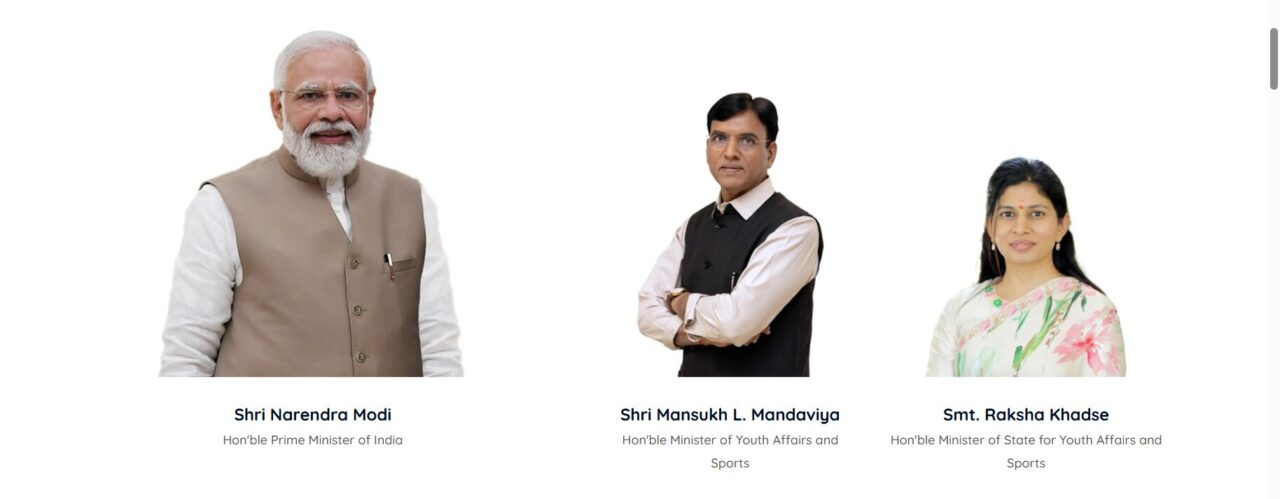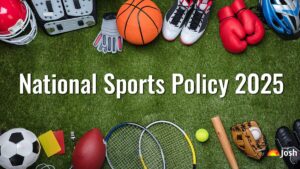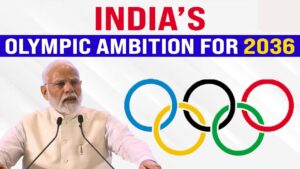Call Anytime +91-9212799477

Khelo Bharat Niti (NSP-2025): A New Dawn for India’s Sporting Future and Physical Education
A Nation’s Sporting Destiny Reimagined”

India’s tryst with structured sports development began over four decades ago. What started as a modest but crucial acknowledgment of sports in national policy has evolved into a transformative movement—one that now stands on the brink of redefining our identity on the global stage.
The journey from National Sports Policy 1984/85 to the recently unveiled National Sports Policy 2025 (NSP 2025) tells the story of a nation awakening to the true potential of sports—not just as a medal pursuit but as a fundamental driver of national progress.
Laying the Groundwork in 1984/85
India’s sports policy journey formally began with the National Sports Policy of 1984, a visionary step that institutionalized sports as a tool for nation-building. It led to the creation of the Sports Authority of India (SAI), the integration of Physical Education in schools, and significant investment in infrastructure post the 1982 Asian Games. This era marked India’s first real commitment to structured sports development.
The Second Leap: Deepening Roots in 2001
The momentum deepened with the National Sports Policy of 2001, which emphasized mass participation in rural and tribal regions and excellence at the elite level. It promoted scientific training, stronger sports federations, corporate partnerships, and inclusivity. However, despite its progressive goals, the policy struggled with on-ground execution, inadequate infrastructure, and limited recognition of Physical Education professionals—gaps that New Sports Policy 2025 is seeking to address effectively.
A Historic Milestone in India’s Sporting Journey

The National Sports Policy 2025 (NSP 2025) marks a bold and visionary leap by the Government of India to reimagine sports and physical education as fundamental pillars of national development. Replacing the two-decade-old 2001 framework, this policy is a clear declaration of India’s aspiration to become a global sporting powerhouse by 2036, the year we aim to host the Olympic Games. More than just a strategy for medals, NSP 2025 positions sports as a transformative force for economic growth, youth empowerment, educational reform, and social inclusion. For the first time in independent India’s history, Physical Education (PE) is no longer treated as a supplementary or co-curricular element, but rather as a critical, mainstream component of the national educational and developmental agenda.
NSP 2025 is a transformational shift that reflects India’s ambition to be among the top five sporting nations by 2047. At its core lies a dynamic five-pillar framework that integrates sports seamlessly with global excellence, economic opportunity, societal well-being, and educational reform. The policy recognizes that sports are no longer extracurricular—they are central to nation-building. It aims to elevate Physical Education from a marginal activity to a key academic subject, empower PE teachers as frontline agents of fitness, discipline, and talent discovery, and link sports to broader national goals such as economic empowerment, cultural heritage preservation, and social equity. NSP 2025 is a call to action—a comprehensive roadmap that brings together the whole of government and society to unlock India’s sporting and physical potential.
Five Pillars That Define a Progressive Vision

The National Sports Policy 2025 is anchored on five transformative pillars that redefine India’s approach to sports and physical education. At the forefront is Excellence on the Global Stage, emphasizing early talent identification, world-class coaching, and the integration of sports science to build a strong grassroots-to-elite athlete pipeline. Sports for Economic Development positions sports as a catalyst for employment, entrepreneurship, tourism, and private investment, recognizing its vast untapped potential. Sports for Social Development envisions sports as a tool for inclusion and empowerment, especially for women, tribal communities, and other marginalized groups. Through Sports as a People’s Movement, the policy promotes mass participation via initiatives like Fit India and Khelo India, ensuring access to infrastructure and fostering a nationwide fitness culture. Most significantly, Integration with Education, aligned with NEP 2020, embeds physical education as a core subject from foundational learning stages, giving it equal academic importance and establishing a lifelong foundation for health, discipline, and holistic growth.
Physical Education: No Longer on the Sidelines—A Paradigm Shift for India’s Future
The National Sports Policy 2025 (NSP 2025) marks a watershed moment in India’s education and sports landscape by officially elevating Physical Education (PE) from a sidelined subject to a central pillar of national development. After decades of being overlooked, PE is now recognized as a mainstream academic discipline with equal weightage and structured assessments—ensuring that every student benefits from physical fitness, movement education, and sports exposure from an early age. For the first time, PE teachers are acknowledged as critical nation-builders—responsible for spotting talent, driving community wellness, and shaping youth behavior. Backed by mandated professional development, certification pathways, and infrastructure support, the policy transforms schools into formal talent hubs, connecting grassroots participation to elite performance. NSP 2025 isn’t just a policy—it’s a paradigm shift that finally places fitness, well-being, and holistic growth at the heart of India’s future.
Aligning with NEP 2020 – A Unified Vision for Holistic Education
One of the most powerful dimensions of the National Sports Policy 2025 is its seamless alignment with the National Education Policy (NEP) 2020, forming a unified framework that views education as the holistic development of both mind and body. This synergy ushers in a transformative vision where physical education and sports are not just co-curricular activities, but essential pillars of a well-rounded education. By embedding physical activity from the foundational years, the policy promotes lifelong physical literacy, equipping children with vital motor skills, coordination, and health awareness to combat growing lifestyle disorders like obesity and screen addiction. It also dismantles the long-standing misconception that sports and academics are incompatible. Through structured timetables, curriculum integration, and dual assessment systems, students can now thrive both intellectually and physically. Moreover, NSP 2025 encourages educational institutions to adopt dual career pathways—supporting student-athletes with flexible learning models, academic credits for sports achievements, and mentorship frameworks. This recognition of sports as a viable and respected career choice will allow aspiring athletes to pursue excellence without sacrificing education.
While the National Sports Policy 2025 is visionary and long-awaited, its true impact depends on effective, ground-level execution. Key challenges include a shortage of trained PE teachers, inadequate infrastructure, especially in rural areas, and deep-rooted cultural resistance that undervalues sports in comparison to academics. To realize its full potential, the policy must be implemented in mission mode, with urgent efforts in recruitment, investment, and nationwide awareness to shift mindsets and build a sports-positive culture.
The Race to 2036: No Time to Waste

With India’s ambition to host the 2036 Olympic Games, the country stands at a pivotal crossroads—where aspiration must be matched with action. The National Sports Policy 2025 is a structural revolution in how India approaches sports and physical education. The transformation needed is not gradual—it must be bold, urgent, and systemic. To truly harness the potential of NSP 2025, we require immediate and synchronized action from all quarters. State governments must rise to the occasion by formulating state-level sports policies aligned with the national framework. Schools and educational institutions must embed Physical Education into the heart of their pedagogy, recognizing it as a core subject vital to holistic student development. Simultaneously, sports federations, NGOs, and National Sports Promotion Organizations like the Physical Education Foundation of India (PEFI) must serve as catalysts, taking charge of implementation, training, and mass awareness to build a sporting culture from the ground up.
Time to Act on India’s Sporting Future
The National Sports Policy 2025 marks a historic turning point for India’s sports and physical education ecosystem. We extend heartfelt gratitude to Hon’ble Prime Minister Shri Narendra Modi ji and Hon’ble Union Sports Minister Shri Mansukh Mandaviya ji for their visionary leadership in making this long-awaited reform a reality. With NSP 2025, sports are no longer sidelined—they are a catalyst for national development. Now, the onus is on every stakeholder to turn this bold vision into action. From schools to stadiums, it’s time to build a fitter, stronger, and globally competitive India. The roadmap is clear. The moment is now.
-By Dr. Piyush Jain
National Secretary, Physical Education Foundation of India (PEFI)
A Recognized National Sports Promotion Organization under the Ministry of Youth Affairs & Sports, Government of India
Privacy Policy | Terms & Conditions | Refund Policy
© Copyright 2024 by PEFINDIA.org | Designed & Developed By CraftyWebbies
